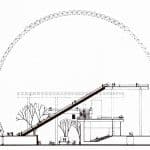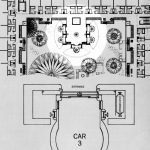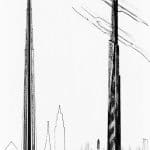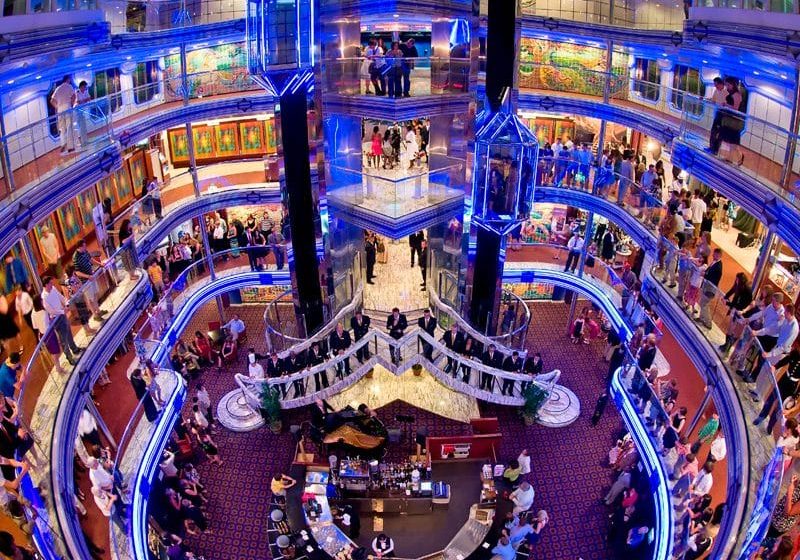ELEVATOR WORLD 1967
Mar 1, 2017
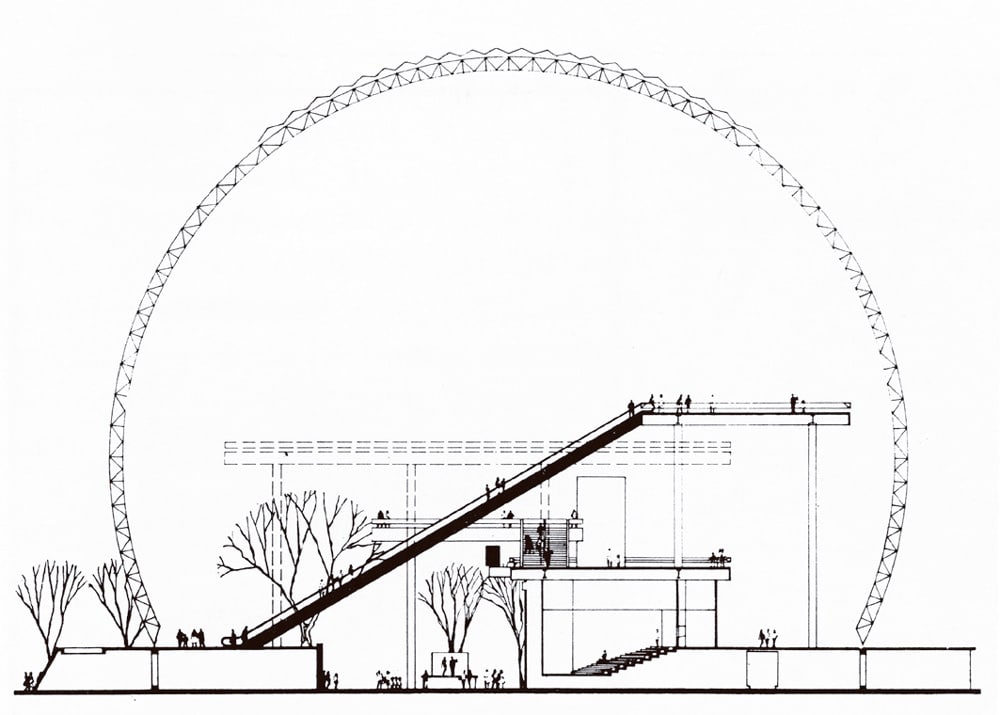
Dynamic year saw numerous firsts for the elevator industry and bold predictions for it.
The year 1967 was one of firsts, as well as a time in which the social, cultural and political events of the previous years continued to play out, often in dramatic fashion. The year in sports witnessed Super Bowl I, in which the Green Bay Packers defeated the Kansas City Chiefs 35-10. Moviegoers were treated to a diverse range of films that included The Graduate, Bonnie and Clyde, In the Heat of the Night, Cool Hand Luke and Guess Who’s Coming to Dinner. The diversity of American tastes was also reflected in the Grammy Awards, which saw the Beatles garner a Grammy for “Song of the Year” for “Michelle,” while Frank Sinatra won “Record of the Year” for Strangers in the Night. The country’s changing cultural landscape was reflected in the selection of Thurgood Marshall as the nation’s first African American U.S. Supreme Court judge. This milestone occurred against the backdrop of the Civil Rights Movement, protests and racial violence (most notably in Newark, New Jersey, and Detroit). Protests against the war in Vietnam also continued, with the largest occurring in October, when approximately 100,000 protestors gathered in Washington, D.C. And, with the Cold War in full swing, the U.S. and the Soviet Union drafted the Treaty on the Non-Proliferation of Nuclear Weapons signed the following year.
Against and within this dynamic social, cultural, and political backdrop, the vertical-transportation industry also embraced numerous firsts and dared to imagine what the future might hold. In January, ELEVATOR WORLD reported that a contract concluded the previous year had set one, and possibly two, industry records:
“When the Otis Elevator Co. secured the record $35,080,000 contract for providing the equipment in New York City’s World Trade Center, it also agreed to maintain the entire plant for the next five years at the rate of $665,000 a year — possibly another record. More than 125 men will be used by Otis in manufacturing the equipment over the next four years, and 200 constructors will be on the jobsite for a three-year period, installing the 46 shuttle express elevators, 162 standard lifts and 46 escalators.”
Otis also garnered another record in the escalator it provided for the United States Pavilion (then under construction) for Expo 67 in Montreal. The escalator had a rise of 68 ft., 7 in. and a span of 123 ft., 1 in. between supports, which made it North America’s highest-rise escalator. It also had a dramatic setting in Buckminster Fuller’s 250-ft.-diameter transparent geodesic dome (Figure 1).
Otis’ World Trade Center contract was only one of several significant contracts announced in 1967. In January, EW also noted that the elevator division of Westinghouse Electric Corp. had been awarded the contract for Chicago’s First National Bank Building (now Chase Tower). Designed by Perkins & Will in association with C.F. Murphy Associates, construction had started in 1964 and completed in 1969. The building features a distinctive tapering, curving shape and unique dual elevator cores (Figure 2). The building employs 50 high-speed elevators: the bank elevators serve four sublevels through the 22nd floor, and the tenant elevators were divided into low-rise (floors 23-39) and high-rise (floors 40-60) groups. The respective speeds of the groups were 1,000, 1,400 and 1,600 fpm. EW described this installation, which included 10 escalators, as “one of the largest high-rise transportation systems ever designed.”
In November, EW reported on the opening of the Hyatt Regency Hotel in Atlanta, which featured one of the first large-scale interior atriums that employed multiple glass observation elevators. John Portman, the building’s architect, also provided the sketch that inspired the birdcage-like elevator cars, which Sturgeon wrote were designed and manufactured by Otis:
“The pastel-colored fiberglass domes atop the cabs conceal the crosshead, cable hitches, door operators and other gear. Add to this: recessed guide rails, safety devices tucked within the bottom companion to the upper dome and hoisting cables located out of sight within the shaftway, and one has the impression of space vehicles functioning without visible means of support.”
The cars also cost a record US$35,000 each, and their extravagance matched that of the hotel’s 21-story atrium, which Portman claimed was inspired, in part, by Copenhagen’s Tivoli Gardens (Figure 3 and 4). EW founder William C. Sturgeon wrote the Hyatt Regency article and addressed it in his monthly editorial. Sturgeon opined that Portman’s atrium had, in fact, little in common with the Tivoli Gardens, which he characterized as a place “of rest and refuge from the city.” He saw the Hyatt Regency’s atrium as a place designed for “where the action is.”
Having stayed “a few days at the new-styled Atlanta hostelry,” Sturgeon also described the rooms as minimal in design and comfort with, apparently, all of the money having been spent on the atrium. In his final thoughts on this topic, he observed, “If one wants to see a great elevator installation, visit the Hyatt House. If it’s tranquility, refreshment and an uplifting of the spirit that’s desired, catch the boat for Copenhagen.”
The February and March issues of EW featured a two-part article by Charles W. Lerch, founder of Lerch Bates Inc. The article, firmly grounded in the present, sought to predict the future and was titled “Elevators, What the Future Holds.” Lerch claimed: “The near future — 20 to 30 years hence — can be predicted with some degree of accuracy by a look at the past and a careful examination of the present.” His article opened with an overview of elevator history that focused on the steady increase in operating speeds — from 600 fpm in the early 20th century to proposed speeds of 1,800 fpm in Chicago’s John Hancock Tower (under construction in 1967). He also outlined the history of dispatching and control systems, from car switches to “full collective, semi-collective, and eventually selective collective” controls. Lerch predicted elevator speeds would continue to increase, stating: “With uniformly pressurized buildings, speeds in excess of 5,000 fpm or more can be successfully met with present-day methods.” These speeds would be needed in future skyscrapers, about which he claimed the following: “With a fair degree of confidence, we may expect buildings to go to 150 stories in the next 20 years and probably to 5,000 stories (such as Frank Lloyd Wright envisioned a decade ago) in the distant future” (Figure 5).
In addition to drawings of Wright’s mile-high skyscraper, the article included images depicting two other visions of future skyscrapers, one of which appeared on the cover of the February issue. The cover image depicted the School of the Future, designed by Frederic P. Wiedersum Associates. The massive proposed building was to house the various academic disciplines in connected high-rise towers (Figure 6). The other image depicted an architectural model inspired by and constructed in 1965 under the direction of American author Norman Mailer. The model reflected Mailer’s vision of the future and represented a building more than 1/2 mi. high, 3/4 mi. in diameter and capable of housing 5,000 people in 15,000 apartments. An aspect of the model not clearly visible in the photograph is that it was approximately 7 ft. high and constructed entirely of LEGO blocks. A color photograph of Mailer’s LEGO City graced the cover of Cannibals and Christians, a collection of Mailer’s writings published in 1966 (Figure 7). Although Lerch did predict that, in the future, “the use of more than one elevator per hoistway would seem likely,” he did not discuss elevators that moved horizontally as well as vertically — systems that might have proved useful in these two schemes.
Lerch did agree with Mailer in that he imagined that, in the future, more people would want to live in urban centers. This desire would require specialized skyscrapers, including towers that housed “commercial, business and professional personnel either as single-purpose or multiple-purpose buildings,” towers dedicated to housing (he cited Chicago’s recently completed Marina City as an example) and mixed-use buildings (such as the John Hancock Tower).
To serve these and other future buildings, Lerch believed performance standards for all transportation systems would have to improve. In addition to faster elevator speeds, he predicted faster floor-to-floor, door-open-to-door-open times: “We may confidently expect to attain 7.0 s. consistently in the next 10 years.” Escalator speeds would also increase, and he expected “the standard escalator speed of 90 fpm to be gradually replaced by the 120-fpm speed now occasionally used. Eventually, this will be raised to 200 fpm, first for business and institutional use.” Lastly, he imagined that moving-walk speeds would “be raised to 120 fpm and then to 200 fpm as people become accustomed to moving at high speed.”
The April issue included an illustrated editorial titled “The Aesthetics of Rationalization,” which reflected Sturgeon’s broad range of interests and influences. He described how an encounter with freelance photographer Harry Green in 1964 at the New York World’s Fair had changed his perspective on how to see the world: “Since then, I’ve found almost everything looks better when its aesthetics are considered, not its functionalism.” Sturgeon was not implying that functionalism was not important, but that beauty can be found almost anywhere – if you are willing to look. He extended this attitude to the mass production of elevator components, and, working with amateur photographer Bellotti Loris (an engineer with SABIEM in Bologna, Italy), he commissioned a series of photographs that celebrated the inherent beauty of rationalization. Sturgeon published a small gallery of these images, which Loris hoped EW readers might find “unusual, exiting and beautiful” (Figure 8).
Finally, the increasing international reach of EW was highlighted in 1967 in several ways. The February issue featured a table listing EW’s 1,076 foreign subscriptions. The global subscription distribution was as follows: Europe, 671; Australasia, 182; North America, 140; South America, 36; Africa, 24; and the Middle East, 17. Sturgeon’s editorial in the August issue, titled “The Missing Ingredient,” reflected a different aspect of globalization. He recounted a recent visit to Yugoslavia, in which he had observed the complete lack of opposition to official communist party doctrine. However, Sturgeon’s musings on the meaning of this observation had as much to do with current American affairs as they did with Yugoslavia. He noted that “many” within the U.S. were currently “advocating the silencing of opposition to the war in Vietnam,” and he questioned the appropriateness of this position. He claimed that “the crux of whether or not a nation is a democracy” is whether “its citizenry is free to voice its objections to the actions and policies of those in power.” Sturgeon cautioned EW readers: “Whenever we are tempted to suppress opposition in our nation, we might consider that uniformity is one of the basic ingredients that keeps a communist country, communist.” He concluded by stating, “Should we ever succeed in achieving a monolithic national purpose, a sameness of national outlook, we will be on the road” to an authoritarian state. Sturgeon’s recognition of the need for open — and civil — debate on issues, which he expressed in this 50-year-old editorial, remains relevant and serves as an important reminder of the power of a voice from the past.
- Figure 1: Section, United States Pavilion, Expo 67
- Figure 2: Plan and section, First National Bank, Chicago
- Figure 3: Cover, EW, November 1967: atrium, Hyatt Regency Hotel, Atlanta
- Figure 4: Partial atrium plan, Hyatt Regency Hotel, Atlanta
- Figure 5: “Design for a Mile High Skyscraper,” Frank Lloyd Wright (1957)
- Figure 6: Cover, EW, February 1967: School of the Future, designed by Frederic P. Wiedersum Associates
- Figure 7: Cover, Cannibals and Christians (1966) by Norman Mailer depicting LEGO City (note the model of the UN Tower in the lower left)
- Figure 8: Cover, EW, April 1967: hatchway switch magnets; photo by Bellotti Loris
Get more of Elevator World. Sign up for our free e-newsletter.
